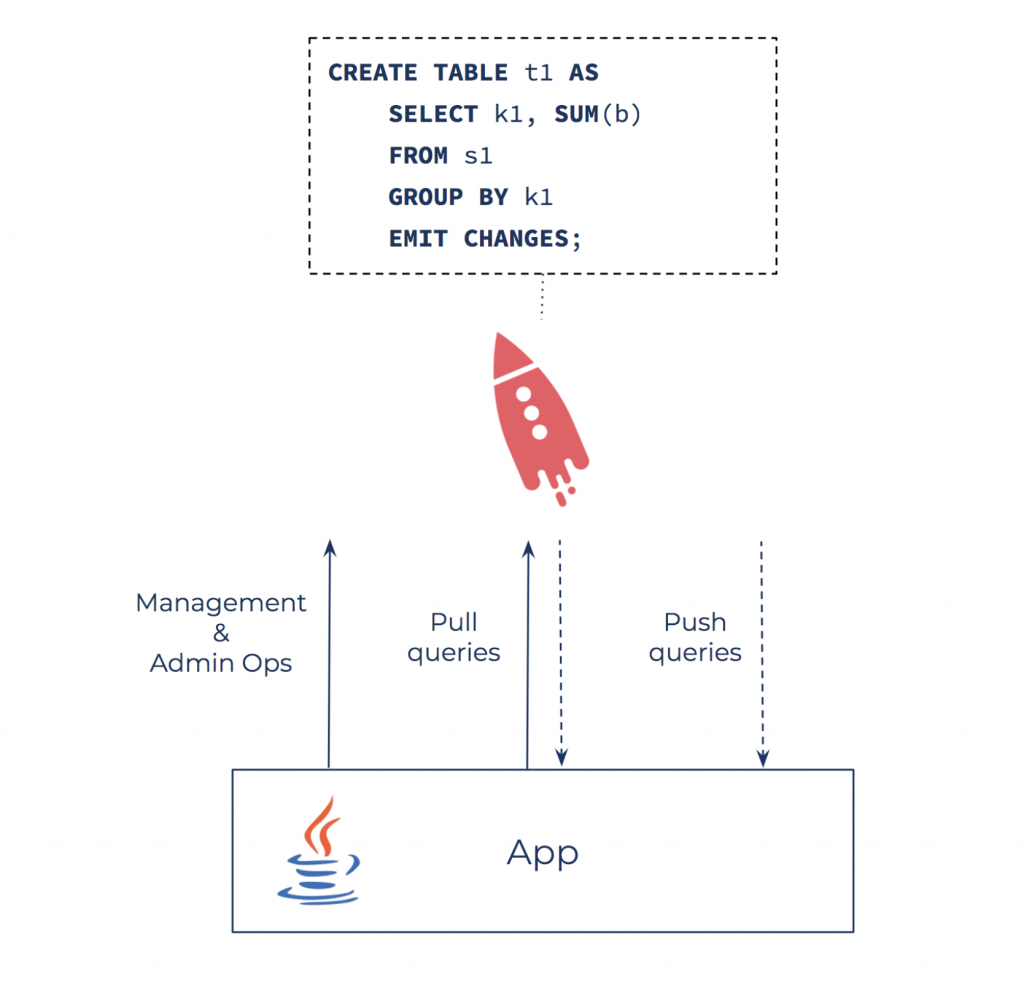[Virtual Event] GenAI Streamposium: Learn to Build & Scale Real-Time GenAI Apps | Register Now
Announcing ksqlDB 0.11.0
We’re pleased to announce ksqlDB 0.11.0, which takes a big step forward toward improved production stability. This is becoming increasingly important as companies like Bolt and PushOwl use ksqlDB for mission-critical use cases. This release includes numerous critical bug fixes and a few feature enhancements. We’ll step through the most notable changes, but see the changelog for the complete list.
Stability improvements
ksqlDB 0.11.0 contains improvements and fixes spanning stranded transient queries, overly aggressive schema compatibility checks, confusing behavior around casting nulls, bad schema management, and more. Here, we highlight a couple of additional, notable improvements.
HTTP client caching for inter-node requests
ksqlDB supports horizontal scaling by having multiple ksqlDB nodes coordinate to process data. As such, materialized state for persistent queries may be spread among multiple nodes. When a pull query request is issued, if the receiving ksqlDB server does not host the requested data, the request is forwarded to a node that does. Starting with ksqlDB 0.11.0, the HTTP clients used for such forwarding requests are cached and reused, greatly improving pull query performance in multi-node clusters. More details may be found on GitHub.
Windowed table Apache Kafka® topic retention
As of ksqlDB 0.9.0, windowed aggregations have configurable retention—simply add a RETENTION clause to the SQL query that creates the windowed table. The specified retention controls how long aggregate state for a particular window is available in the materialized state store. Prior to ksqlDB 0.11.0, retention clauses had no impact on the retention of the underlying Kafka topic for the windowed table, which led to confusing behavior. ksqlDB 0.11.0 also fixes a long-standing bug where old windows were not properly expired from the underlying Kafka topic.
New Java client methods
ksqlDB 0.10.0 saw the introduction of ksqlDB’s first-class Java client, including support for pull and push queries, as well as inserting new rows into existing ksqlDB streams. We’re happy to unveil expanded functionality in ksqlDB 0.11.0, including methods to create and manage new streams, tables, and persistent queries, as well as admin operations such as listing existing streams, tables, topics, and queries.

Create and manage new streams, tables, and persistent queries
ksqlDB statements for creating and managing new streams, tables, and persistent queries include:
- CREATE STREAM/TABLE
- CREATE STREAM/TABLE … AS SELECT
- INSERT INTO … AS SELECT
- DROP STREAM/TABLE
- TERMINATE <QUERY_ID>
As of ksqlDB 0.11.0, these statements are now supported by the Java client via its executeStatement() method. For example:
String sql = "CREATE STREAM ORDERS "
+ "(ORDER_ID BIGINT, PRODUCT_ID VARCHAR, USER_ID VARCHAR)"
+ "WITH (KAFKA_TOPIC='orders', VALUE_FORMAT='json');";
client.executeStatement(sql).get();
The executeStatement() method may also be used to easily retrieve the query ID for a newly created query. This query ID may later be used to terminate the query.
String sql = "CREATE TABLE ORDERS_BY_USER AS "
+ "SELECT USER_ID, COUNT(*) as COUNT "
+ "FROM ORDERS GROUP BY USER_ID EMIT CHANGES;";
ExecuteStatementResult result = client.executeStatement(sql).get();
String queryId = result.queryId().get();
client.executeStatement("TERMINATE " + queryId + ";").get();
See the documentation for additional options and usage notes.
List streams, tables, topics, and queries
As of ksqlDB 0.11.0, the Java client also supports listStreams(), listTables(), listTopics(), and listQueries() methods for retrieving information about available ksqlDB streams and tables, Kafka topics, and running queries. For details and examples, see the documentation.
Enhanced pull query support
ksqlDB’s pull queries allow users to fetch the current state of a materialized view. When the materialized state contains the results of a windowed query, it’s useful to filter state on not only the rowkey but also the window bounds.
Prior to ksqlDB 0.11.0, this filtering was enabled by the WINDOWSTART keyword. Starting with ksqlDB 0.11.0, the WINDOWEND keyword may be used in pull query filters as well. This new functionality is especially useful in the case of session windows, where the size of the time windows is not known in advance.
SELECT WINDOWSTART, WINDOWEND, count, alert_types
FROM alerts_per_session
WHERE location = 'DataCenter1'
AND '2020-07-02T20:00:00' <= WINDOWSTART
AND WINDOWEND <= '2020-07-03T08:00:00';
Get started
Get started with ksqlDB today, via the standalone distribution or with Confluent Cloud, and join the community in our #ksqldb Confluent Community Slack channel.
Did you like this blog post? Share it now
Subscribe to the Confluent blog
Stop Treating Your LLM Like a Database
GenAI thrives on real-time contextual data: In a modern system, LLMs should be designed to engage, synthesize, and contribute, rather than to simply serve as queryable data stores.
Generative AI Meets Data Streaming (Part III) – Scaling AI in Real Time: Data Streaming and Event-Driven Architecture
In this final part of the blog series, we bring it all together by exploring data streaming platforms (DSPs), event-driven architecture (EDA), and real-time data processing to scale AI-powered solutions across your organization.

